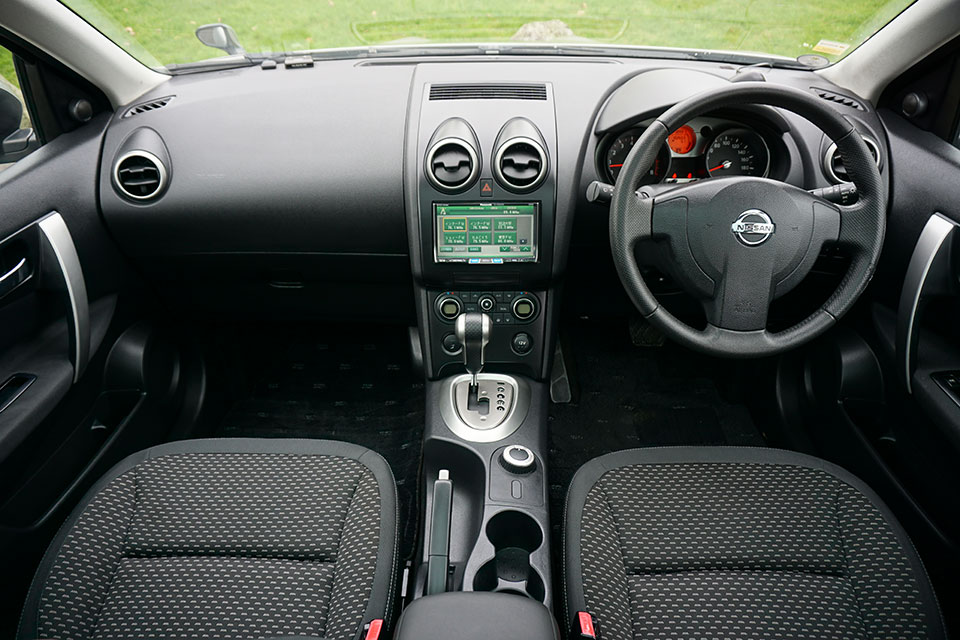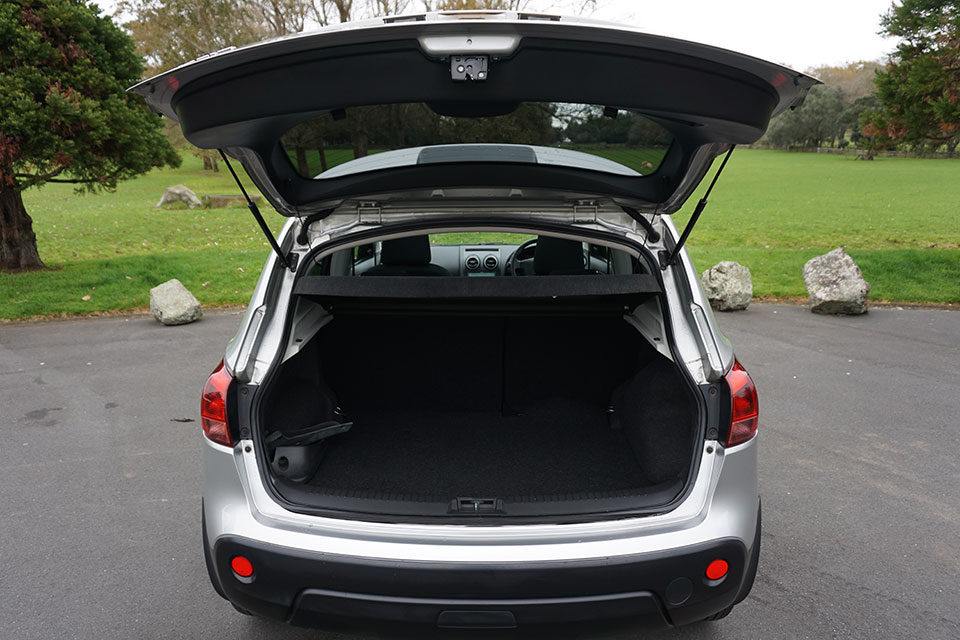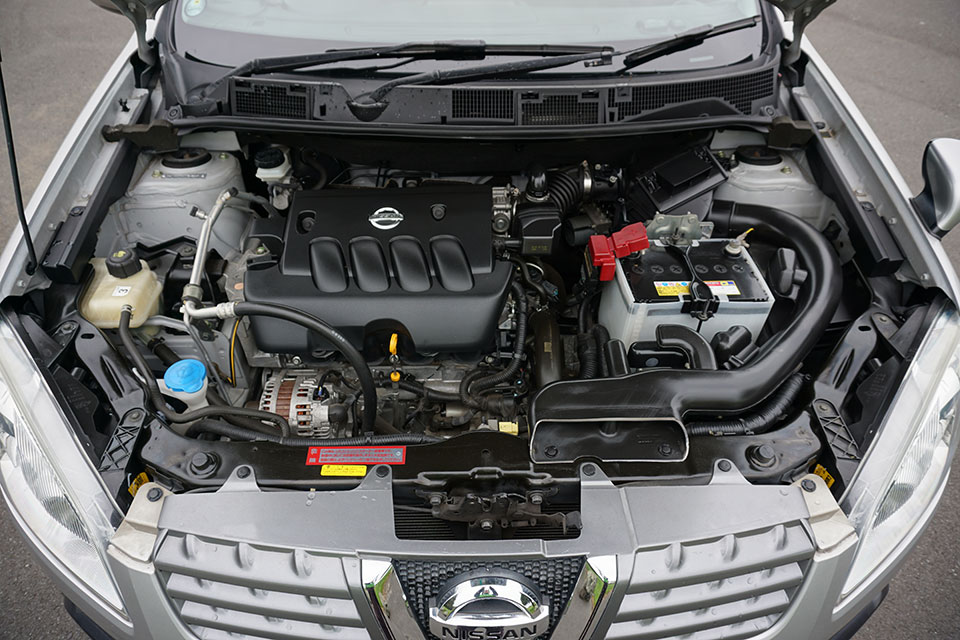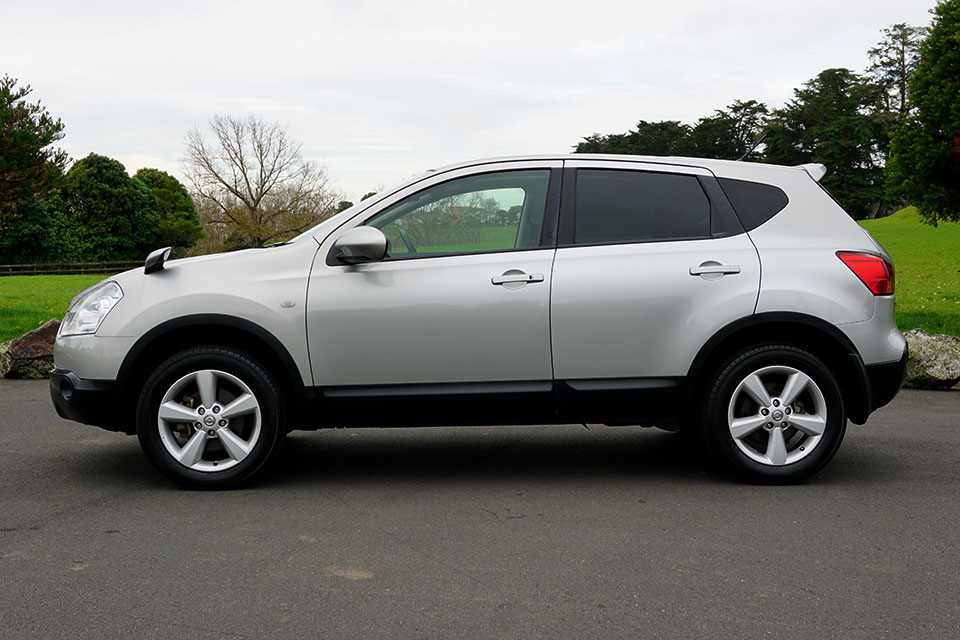Nissan Dualis 2006-2013 used car review
The Nissan Dualis is a compact SUV that offers excellent manoeuvrability and a zippy engine.

The Nissan Dualis is a compact SUV that offers excellent manoeuvrability and a zippy engine, which makes it great for the city. The interior feels low quality and standard safety features are basic.
The Nissan Dualis is the Japanese version of the Qashqai small SUV sold in New Zealand. The New Zealand-new version was built in the United Kingdom and came in two sizes with a range of petrol and diesel engines. The Dualis was available in one size, with one engine and one transmission. It is sized and shaped like a small hatchback, which means it might appeal to buyers looking at both types of vehicles. It shares its engine, transmission and suspension with the larger X-Trail SUV.
Inside and out
The Dualis is styled very much like a small hatchback, with the height of the body hidden by the use of black plastic on the lower parts of the car. It has large, chunky wheel arches with relatively small 16-inch alloy wheels. The headlights are huge and blend into the front of the car with a large hump in the bonnet and front guards. Our review vehicle features a popular option - a large glass roof reaching far enough back to cover the rear seats.
While nicely styled, the plastics in the interior felt a little cheap and brittle. Instruments sit in individual pods, with a hood arching over them. Inset in the middle is a round orange-coloured screen for the digital fuel gauge and trip computer. The centre console comes forward from the rest of the dash to bring the controls closer to the driver, although they are set quite low and require you to take your eyes off the road to use them.
Our review car features a touchscreen infotainment system, which will need a band expander to receive local stations. The maps for the navigation can’t be updated for local use. The controls for the climate control are below this. A smart feature allows you to blow air over the front passenger’s head to the rear seat from a vent on top of the dash.
The front seats are comfortable, though they feel a little narrow. The driver’s seat can be adjusted for height manually. With the optional glass panoramic sunroof closed, taller drivers and front passengers could find headroom a little short. Rear seat legroom is adequate, with passengers over 182cm tall likely to have their knees against the seat in front. The rear bench is sculpted to be comfortable for two; three adults will not be. A small child can sit in the middle, although they will be sitting on a raised hump.
The Dualis’s boot is 410 litres, which seems like a lot of volume. However, the wheel arches and shape of the car make it less practical in reality. Two medium and two small suitcases will fit but it is impossible to squeeze in any more than one large case without removing the load cover. For more space, you will need to fold down the 60/40 split rear seat. Access is excellent, with a flat lip and a wide opening.
On the road
The Dualis is available with only one engine and transmission choice – a 2-litre four-cylinder petrol matched to a CVT automatic. The engine produces 104kW and 193Nm. While it feels quick enough for around-town duties, if you have a load of people on board, it will need to be worked hard on the open road. The CVT automatic transmission is very smooth and did not rev the engine too hard. It can be shifted manually.
The Dualis is one of the better handling SUVs available. It is very car-like to drive with nicely weighted and direct steering. The engine is reasonably quiet and you hear little road noise in the cabin. The ride comfort is excellent and city street bumps are absorbed well. The brakes are very effective. A tight 10.6m turning circle is impressive and handy in city car parks. Although most small SUVs feature an entirely automatic all-wheel drive system, the Dualis’s is switchable.
That allows the car to be front-wheel drive, all-wheel drive or locked into an off-road mode, which sends an equal amount of power to the front and rear wheels for maximum traction. We wouldn’t take it too far off-road because the tyres are meant for the street and it doesn’t have more ground clearance than a standard car. Gravel roads and ski field car parks are its limits. A front-wheel drive version is also available.
The large mirrors also give a good view down the side of the car. With a high rear window, we think a reversing camera is a good idea and they are not standard on the model. Fitting a camera yourself costs from $50 or a professional will do it from $200.
We could not find an official tow rating for the used import Dualis. The similar Qashqai is rated to tow 685kg unbraked (a small-to-medium size trailer), and 1,200kg braked (a small trailer boat). That’s average for a small SUV.
Reliability
The Dualis is reliable and features a timing chain that will not require regular replacement.
The previous generation Nissan 2-litre engines suffered from overheating issues and it is too early to tell if this generation will do the same. Bearing this in mind, keep an eye on coolant levels and make sure the car is regularly serviced. When shopping, check for a milky white substance under the oil filler cap – that’s an indication that water is entering the engine.
The first sign will be a whine from the transmission. The best option to fix it is by replacing it with a used unit at a cost from $2,000. The transmission can also suffer from a shudder at take-off, and while this might not indicate failure, the only fix is an expensive rebuild.
Rear shock failure is common in the model and is caused by premature wear of the lower bush in the suspension, leading to metal-on-metal contact. That will show up as a clunk from the rear of the car over bumps. Replacement units cost from $200 each with a few hours of labour required to fit them.
The handle for the rear door is known to become brittle over time and can snap. If this happens you will need a replacement to allow you to open the door easily. The lock is also known to develop a rattle, though this is more easily fixed by removing it and surrounding it with a layer of insulating tape.
A couple of cosmetic issues can occur in the interior. The plastic on the rim of the steering wheel is known to peel off with use and age. It is hard to replace as the steering wheel contains the driver’s airbag – you are best to leave it or have a steering wheel cover fitted. The fabric in the door trims can also peel off. You can glue it back on yourself, although a professional motor trimmer is likely to do a better job.
Safety
There is no Used Car Safety Rating available for the Dualis. While the New Zealand-new Qashqai carries a five-star ANCAP rating, the model tested had a far higher level of safety equipment. Japanese NCAP testing of a 2009 model gave it the maximum six stars for both driver and passenger protection.
Our review vehicle was fitted with driver and passenger air bags and antilock brakes. A safety package adding electronic stability control, electronic brakeforce distribution, emergency brake assist, and side and curtain airbags were optional but rare.
Our review vehicle does not have ISOFIX child seat mounting points. Many of this generation Dualis do – look for them along the join between the top and bottom rests for the metal loop. The centre seatbelt is a lap-only type and does not offer as much protection as a three-point (with shoulder) belt.
Cost of ownership
Nissan recommends servicing the Dualis every year or 15,000km. The basic service is affordable at $230. A major service is required at 100,000km for the CVT transmission, costing $650.
RightCar estimates that over 14,000km of driving a year, the Dualis will cost $2,210 to fuel. The 65-litre tank from empty will cost $130 at $2 a litre, and you could travel up to 760km before the fuel light comes on.
Sitting in the second cheapest ACC levy band, the annual licensing fee (registration) for the Dualis is $99.02.
Trade Me Insurance estimates insurance for a car worth $12,960 will cost $53.78* per month.
Buyers' guide
On Trade Me, the Nissan Dualis ranges from just over $7,500 to $25,000 for later and lower mileage vehicles. All-wheel drive models and the G specification car with the glass roof command the most money.
All-wheel drive was optional on both models, with FOUR added to their name. A safety package was optional and included electronic stability control, side and curtain airbags.
Variants
- S - Features steel wheels, manual air-conditioning, remote locking and unlocking, driver and passenger airbags and antilock braking.
- G - Adds 16-inch alloy wheels, climate control with separate settings for the driver and passenger and a keyless entry and start system.
Timeline
- 2006 Launched globally
- 2010 Facelifted inside and out
- 2014 Production ends, with the model not replaced in Japan. Internationally, a new version was put on sale.
Details
2008 Nissan Dualis 20G
$8,000 to $20,000 for models which have travelled 70,000 to 120,000km
2-litre four-cylinder 104kW and 193NM
CVT automatic, all-wheel drive
Six-star Japan NCAP
15,000km or 12 months
Space saver
7.9-litres per 100km (claimed)
Regular
2630mm
1785mm
1605mm
685kg (unbraked), 1200kg (braked) (NZ-new Nissan Qashqai)
10.6m
This review covers the Nissan Dualis for model years 2006, 2007, 2008, 2009, 2010, 2011, 2012 and 2013.
Review vehicle supplied by City Motor Group.
*Our insurance estimates are based on a 35-year-old male with no accidents in the last two years, garaging the car in Mission Bay, Auckland. The car is not used for business and will cover 10,000km to 20,000km a year. We estimate with no option add-ons and $500 excess. Customise your estimate at Trade Me Insurance.
Image gallery
Also consider







